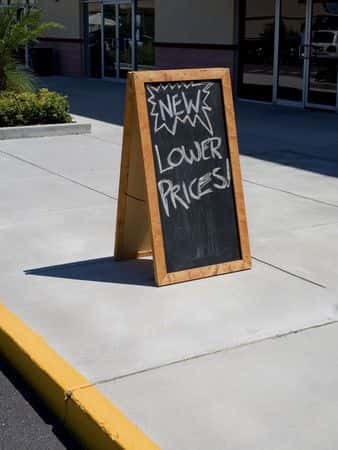Engineering expert witness advises on postal worker’s trip and fall on homeowner’s damaged sidewalk
Updated on
An engineering expert witness advises on a case involving a mail carrier who tripped and fell on the public sidewalk in front of defendants’ two-family home. She broke her ankle and injured her foot.
Plaintiff sued the property owners alleging that their negligence in maintaining the sidewalk and in failing to warn pedestrians of the hazard caused her accident and injuries. The sidewalk was cracked, and parts of it had buckled up to 3/4 inches above the rest of the slab sections. The curb alongside the street was also broken and crumbled in that area.
Because a residential property owner in this state is generally immune from liability for accidents resulting from naturally-caused conditions of public sidewalks abutting the property, plaintiffs must demonstrate that the owners or a specified prior owner of the property did something affirmatively to cause a dangerous condition of the sidewalk.
Question(s) For Expert Witness
1. What caused the sidewalk to crack and buckle?
2. Were the defendants negligent?
Expert Witness Response
 The surrounding walking surfaces eluded the plaintiff's perceptive view because her field of view was transfixed on the approaching general area. The 3/4 inch protruding slab edge restricted the natural movement of the plaintiff's foot and created an upset in the plaintiff's natural stride. She tripped, stumbled, and fell.
The surrounding walking surfaces eluded the plaintiff's perceptive view because her field of view was transfixed on the approaching general area. The 3/4 inch protruding slab edge restricted the natural movement of the plaintiff's foot and created an upset in the plaintiff's natural stride. She tripped, stumbled, and fell.
 I reviewed the record of the case, investigated the property and took photographs 30 months after the accident. The cracks in the sidewalk were caused by three contributing factors:
I reviewed the record of the case, investigated the property and took photographs 30 months after the accident. The cracks in the sidewalk were caused by three contributing factors:
 1. Heavy construction vehicles driven over the sidewalk during the prior owners’ construction of an addition more than 20 years before the fall. The remodeling and addition necessitated the use of a backhoe. A backhoe and other large construction vehicles must have traversed the curb and sidewalk onto the grassy area on that side of the home in order to gain access to the work site. This is evidenced by the fact that this was the shortest route to the construction site, the sidewalk cracks line up with curb cracks and the construction site, and there are no other sidewalk or curb cracks in front of defendants' property.
1. Heavy construction vehicles driven over the sidewalk during the prior owners’ construction of an addition more than 20 years before the fall. The remodeling and addition necessitated the use of a backhoe. A backhoe and other large construction vehicles must have traversed the curb and sidewalk onto the grassy area on that side of the home in order to gain access to the work site. This is evidenced by the fact that this was the shortest route to the construction site, the sidewalk cracks line up with curb cracks and the construction site, and there are no other sidewalk or curb cracks in front of defendants' property.
 2. Commercial vehicles driven over the sidewalk during the current owners’ replacement of the retaining wall. The stone blocks that replaced the railroad ties were likely delivered by a commercial vehicle and kept in a staging area on the grassy right side of the property. A commercial vehicle would have driven over the sidewalk and curb to deliver the stones to that grassy area, thus damaging the sidewalk.
2. Commercial vehicles driven over the sidewalk during the current owners’ replacement of the retaining wall. The stone blocks that replaced the railroad ties were likely delivered by a commercial vehicle and kept in a staging area on the grassy right side of the property. A commercial vehicle would have driven over the sidewalk and curb to deliver the stones to that grassy area, thus damaging the sidewalk.
 3. Water flow from the drainage pipes seeping into the substrata of the sidewalk. Defendants caused or exacerbated the sidewalk cracks by increasing the water flowing from the drainage outlets in the retaining wall and onto the sidewalk. The defendants modified the existing drainage system by replacing the single drainage outlet with a double outlet that extended four inches further out of the retaining wall. The two drain pipes caused a double-barrel shotgun blast of water onto the walkway areas.
3. Water flow from the drainage pipes seeping into the substrata of the sidewalk. Defendants caused or exacerbated the sidewalk cracks by increasing the water flowing from the drainage outlets in the retaining wall and onto the sidewalk. The defendants modified the existing drainage system by replacing the single drainage outlet with a double outlet that extended four inches further out of the retaining wall. The two drain pipes caused a double-barrel shotgun blast of water onto the walkway areas.
 These three factors caused the settling and cracking of the sidewalk and the protrusions that caused plaintiff to trip. Defendants were negligent in causing the deterioration of the sidewalk and failing to maintain the sidewalk, and their negligence was the sole cause of plaintiff's injuries.
These three factors caused the settling and cracking of the sidewalk and the protrusions that caused plaintiff to trip. Defendants were negligent in causing the deterioration of the sidewalk and failing to maintain the sidewalk, and their negligence was the sole cause of plaintiff's injuries.
 The expert is a professional engineer.
The expert is a professional engineer.
About the author
Kristin Casler
Kristin Casler is a seasoned legal writer and journalist with an extensive background in litigation news coverage. For 17 years, she served as the editor for LexisNexis Mealey’s litigation news monitor, a role that positioned her at the forefront of reporting on pivotal legal developments. Her expertise includes covering cases related to the Supreme Court's expert admissibility ruling in Daubert v. Merrell Dow Pharmaceuticals Inc., a critical area in both civil and criminal litigation concerning the challenges of 'junk science' testimony.
Kristin's work primarily involves reporting on a diverse range of legal subjects, with particular emphasis on cases in asbestos litigation, insurance, personal injury, antitrust, mortgage lending, and testimony issues in conviction cases. Her contributions as a journalist have been instrumental in providing in-depth, informed analysis on the evolving landscape of these complex legal areas. Her ability to dissect and communicate intricate legal proceedings and rulings makes her a valuable resource in the legal journalism field.
Subscribe to our newsletter
Join our newsletter to stay up to date on legal news, insights and product updates from Expert Institute.
Sign up nowFind an expert witness near you
What State is your case in?
Subscribe to our newsletter
Join our newsletter to stay up to date on legal news, insights and product updates from Expert Institute.



